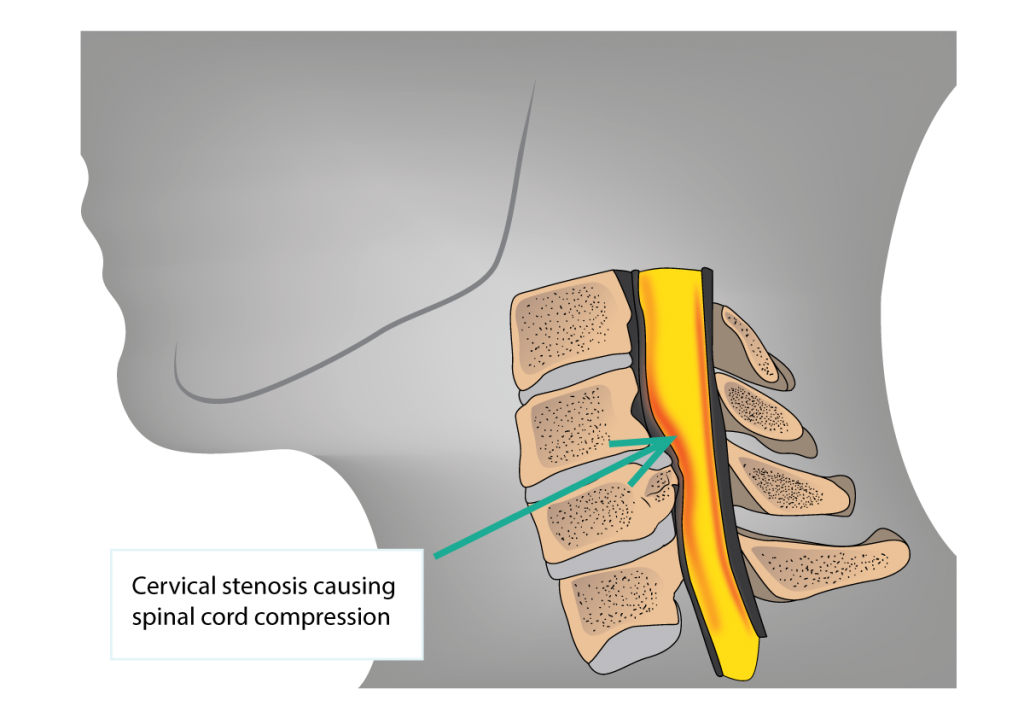Dr Lee treats all conditions of the cervical spine.


Cervical myelopathy is a condition where the spinal cord is damaged due to spinal cord compression. This condition is typically caused by cervical stenosis, but can be due to other conditions such as tumours, ossification of posterior longitudinal ligament (OPLL) or cervical spinal instability.
Cervical myelopathy is a slow progressive condition, often worsened symptomatically in a step-wise manner. This means symptoms may not appear to be progressing for years, and then suddenly become worsened.
Patients with cervical myelopathy may present with the following symptoms:
- Clumsiness of hands, losing grip and dropping things
- Difficulty with fine motor skills such as doing up buttons and handwriting
- Unsteadiness on feet, increased falls
- Intermittent shooting pain into the arms or legs
- Rarely, in severe cases, patients can be paralysed in the arms or legs. This can occur after a fall on the head where the patient has pre-existing cervical cord compression, known as central cord syndrome.
While most spinal conditions can be treated non-operatively, cervical myelopathy is a condition that tends to progress so patients may require surgery.
Dr Lee focuses on obtaining an accurate diagnosis before implementing treatment.
Anterior Cervical Discectomy and Fusion (ACDF)
Anterior cervical discectomy and fusion, or ACDF, involves removal of the affected disc of the cervical spine to relieve pressure off the cervical spinal cord. Then joining the bone segments of the cervical spine together, typically using a cage packed with bone graft.
Anterior Cervical Corpectomy and Fusion
Anterior Cervical Corpectomy and Fusion involves the removal of an entire anterior portion of the cervical spinal bone to achieve decompression of the cervical spinal cord. The space is then reconstructed with a cage packed with bone graft.
Laminectomy (with or without fusion)
Laminectomy involves removal of the bony arches at the back of the cervical vertebrae. If spinal fusion is performed, small screws are inserted and connected with rods to hold the neck segments in place.
Laminoplasty
Laminoplasty involves expanding the dimension of the bony arches at the back of the cervical vertebrae.
Dr Lee will discuss these treatment options during your consultation if surgery is required.
Dr Lee is experienced in performing each of the techniques used for cervical spine treatment, along with the latest minimally invasive spinal surgery techniques. In addition, Dr Lee is also proficient with intraoperative navigation for spinal surgery.

